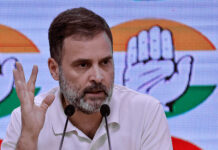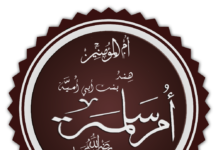The bigger question facing the country is how to ensure a caring, democratic government following the spirit of Indian Constitution of inclusiveness
Ram Puniyani siyasat.net
Four states and a Union territory saw the elections in 2021. Despite the dangerous Corona wave the elections were held in a way which suited the ruling dispensation at centre. While West Bengal (WB) results were most awaited and later welcomed for different reasons, BJP also made some gains particularly in Assam and Pudduchery. Even in WB its voting percentage is substantial and number of seats has gone up. The interesting part of the election results was that in Assam Mahajot (Congress-AIUDF) got more percentage of votes still its number of seats was lesser than BJP+.
Surprisingly despite the hardships inflicted on the people of Assam due to NRC also did not deter the BJP+ from coming to power. The hardships wrought by NRC and CAA were tremendous, still BJP came back to power, mainly due to polarization and its strong electoral machinery. It goes without saying that all over the country, BJP-RSS has erected an electoral machine which is close to faultless and contributes to its victories time and over again.
The real focus was for the WB election results. While BJP jumped from 3 seats to 77, and TMC jumped from the previous 211 to 213 and an increased percentage of votes. While BJP made an impressive jump, still it was not seen as BJP’s achievement. There were multiple reasons for that. The first was the tall claims made by BJP of the sure victory in WB and its claim of crossing the 200 mark. The second was the massive efforts made by BJP and its parent RSS. Its associates like Vivekananda Centre, Vanavasi Kalyan Ashram. VHP, Bajrang Dal and other organizations of Brahmanic Nationalism also made massive efforts to win elections for BJP. The resources and manpower mobilized by RSS-BJP was unparalleled. The rallies of its major leaders were huge and interestingly without wearing mask and threw away the norms of physical distancing.
BJP had also brought in the ‘buyable MLA’s’ from TMC, CPM and other parties. These people were focussed purely on personal power and pelf and walked in to BJP due to various inducements. For BJP it has been a pattern to get the leaders from other parties before the elections or after the results if the difference is narrow and BJP can form the Government. In many states this exercise has been implemented to form the Government. In WB, BJP’s strategist Amit Shah went to claim that most leaders are leaving the TMC and finally Mamata Bannerjee will be left alone.
The whole country bombarded with massive propaganda of the Godi media, which projected BJP in a winning light. Those who know the impact of BJP rule at centre and different states can clearly see the autocratic practices and the adverse impact created on the average people. They were worried about the rising strength of sectarianism and other policies of BJP. The language used by many BJP leaders was very unpalatable, exemplified by Modi’s ‘didi-o-didi’.
As such BJP-RSS has adopted very flexible policies all over the country for winning the elections. One understands that the core agenda of RSS-BJP is for maintaining status quo in society in matters of caste, class and gender hierarchy. At the same time these formations also know that for electoral reasons they have to win over these sections to their side. This was started with formation of Samajik Samrasta Manch, (Social Harmony Forum) which through social engineering-cooption and many other mechanisms is trying to win over dalits to BJP-RSS fold. Interestingly in contrast to the agenda of RSS now various studies show that amongst dalits and Adivsis BJP has a greater hold.
One such study, CSDS post-poll analysis after the 2019 Lok Sabha elections, showed that between 2014 and 2019; support for the BJP among Dalits, Adivasis and Other Backward castes has more than doubled. Incidentally they comprise large section of poor people in the state. Similarly the 2021 post-poll survey also indicates that this support is becoming much higher among Dalits and OBCs than among upper castes.
This has been the strategy of BJP all over. Cambridge sociologist Manali Desai demonstrates the diverse ways used by this party for Adivasis and dalits. These groups find that they feel BJP offered them respect and recognition more than other parties. In their perception this party treats them as equal members of society. It seems these social groups seem to perceive a sense of dignity which motivates them to vote for BJP. This is what explains the BJP’s attitude towards Matua community, which is in large numbers in WB. This is what explains Modi’s visit to Bangla desh and a visit to Matua Mandir.
So while BJP has not succeeded in coming to power in WB, it has definitely made inroads into electoral segments of the state due to which their voting percentage is so high. What is a matter of relief is that had BJP won WB, it would have been very demoralising for the opposition, and for all those who look forward to preserving the values of Indian Constitution, to prevent the hegemony of Brahmanic Nationalism, the core agenda of BJP-RSS. Had it won in WB its confidence would have shot up to make inroads in to different states at a faster pace.
It is quite likely that the gross mismanagement of the pandemic also might have affected the latter phases of the electoral results. The aggressive Jai Shri Ram culture also did not click here. The attempt to polarize by calling Mamata as Begum did not work beyond a point. This time it seems the Muslim community, in the backdrop of NRC-CAA, did not want to squander its chance of keeping BJP out of power and so ignored the players like Asaduddin Owaisi.
The bigger question facing the country is how to ensure a caring, democratic government following the spirit of Indian Constitution of inclusiveness. The real issue is; can social movements and electoral parties come together as a platform to ensure the survival of values of our freedom movement and idea of India for which Gandhi, Ambedkar and Bhagat Singh strove. The issue is to see the problem faced by the nation from Brahmanic Nationalist party and create an inclusive platform.
(www.siyasat.net is Ahmedabad, Gujarat, India based Website, powered by Gujarat siyasat, a Fortnightly)
An Appeal For The Sake Of Upright & Fearless Brand Of Journalism
To sustain and improve our coverage. Gujarat siyasat- a vernacular Fortnightly and English٫ Hindi Website www.siyasat.net
Your little but timely support is needed۔
Bank details، GUJARAT SIYASAT, Current Account 204720110000318, ifsc code BKID0002047 BANK OF INDIA , VASNA BRANCH, AHMEDABAD GUJARAT INDIA
Also on Phone pay, Paytm,Google pay +91 9925531111
We hope you help and see siyasat.net grow. And rejoice that your contribution has made it possible.
सत्य को ज़िंदा रखने की इस मुहिम में आपका सहयोग बेहद ज़रूरी है। आपसे मिली सहयोग राशि हमारे लिए संजीवनी का कार्य करेगी और हमे इस मार्ग पर निरंतर चलने के लिए प्रेरित करेगी। याद रखिये ! सत्य विचलित हो सकता है पराजित नहीं।
Regards,
Abdulhafiz Lakhani
editor@siyasat.net, Ahmedabad
GUJARAT INDIA

































